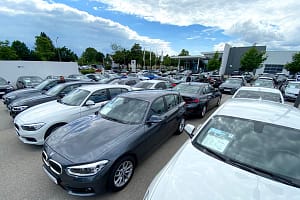In the fast-paced world of retail, ensuring that products are displayed in the most appealing and effective way is crucial for boosting sales. One of the tools used to achieve this is a planogram. But when exactly does a planogram become essential for a retail store? In this article, we’ll explore what a planogram is, how it helps, and when stores should start using it to their advantage.
What is a planogram?
A planogram in retail is a visual representation or diagram that shows how products should be arranged on shelves or display units in a store. It provides a blueprint for store layout, including where each product should go, the placement of signage, and the arrangement of product categories. Think of it as a guide for store staff to ensure that everything is displayed consistently and efficiently.
Planograms are not just about aesthetics. They take into account product sizes, types, customer buying habits, and shelf space. The main goal is to help stores increase product visibility, improve the shopping experience, and ultimately drive more sales.
Why is a planogram important?
A well-designed planogram can have a significant impact on the performance of a retail store. It helps stores make the most of the available space, ensuring that the right products are placed in the most prominent positions. This can encourage customers to purchase more items.
For example, products that are placed at eye level are more likely to be picked up. Similarly, best-sellers or promotional items can be placed in high-traffic areas to grab the attention of customers. By using a planogram, stores can optimise their product placement based on what is most likely to attract shoppers’ attention and meet their needs.
When does a planogram become essential?
While planograms can be helpful at any stage of a store’s operation, there are certain moments when they become particularly essential.
1. When you’re opening a new store
When launching a new retail store, a planogram is vital. It helps create a clear, organised layout from the very beginning. With a planogram, store owners and managers can make sure that the layout is not only visually appealing but also efficient. It ensures that products are placed in a way that maximises sales and encourages customers to navigate the store easily.
Without a planogram, a new store may end up with random or inefficient displays that could confuse customers or limit product visibility. Planning the layout ahead of time helps create a welcoming environment that enhances the shopping experience.
2. When you’re reorganising the store
Even established stores may need to reorganise from time to time. This could be due to seasonal changes, new product lines, or a change in customer preferences. A planogram becomes essential in these cases, as it helps guide the reorganisation process.
For instance, if a store decides to introduce a new category of products or replace an older product line, a planogram will show the best way to adjust the layout. This ensures that new products are integrated smoothly and placed in the most effective locations to capture customer attention.
3. When you want to improve sales performance
If sales are declining or stagnating, it may be a sign that the store’s layout is no longer as effective as it should be. This is when a planogram becomes crucial. A planogram can help assess how well the products are being displayed and suggest improvements to enhance customer engagement.
For example, if customers are not picking up certain products, a planogram can reveal whether these items are placed in less visible or less accessible areas. By rearranging the layout based on the planogram, stores can potentially boost sales by improving the product’s visibility.
4. When you are running promotions or special events
During special events, sales promotions, or seasonal campaigns, a planogram can be a huge advantage. For instance, if a store is promoting a particular product or a group of products, a planogram can help place these items in high-traffic areas. This strategic placement encourages more customers to take notice and make a purchase.
A well-executed promotional planogram ensures that special offers are highlighted effectively, attracting attention without disrupting the store’s overall flow.
5. When you’re managing multiple locations
For businesses with multiple stores, maintaining consistency in product placement across all locations is important. A planogram ensures that products are displayed uniformly in each store. This consistency can reinforce the brand image and make the shopping experience more predictable for customers.
With planograms, retailers can ensure that each store follows the same guidelines, which can help create a unified shopping experience for customers, regardless of location.
How does a planogram help?
The benefits of using a planogram extend beyond just product placement. Here are some ways in which a planogram can help retail stores:
Maximises space: By using the available space efficiently, a planogram ensures that more products are visible without overcrowding shelves.
Improves sales: Products are placed strategically to catch the eye of customers, increasing the likelihood of a purchase.
Enhances the customer experience: A well-organised store makes shopping easier and more enjoyable, which can lead to higher customer satisfaction and return visits.
Increases consistency: It ensures uniformity in product placement across multiple locations, helping maintain a consistent shopping experience.
A planogram is an essential tool in the retail world, especially when it comes to optimising product displays and boosting sales. Whether you’re opening a new store, reorganising an existing one, or running a promotional event, using a planogram can help you achieve a more organised, effective, and customer-friendly shopping environment. By carefully considering when and how to implement a planogram, retail stores can significantly improve both their layout and overall sales performance.






Leave a Comment